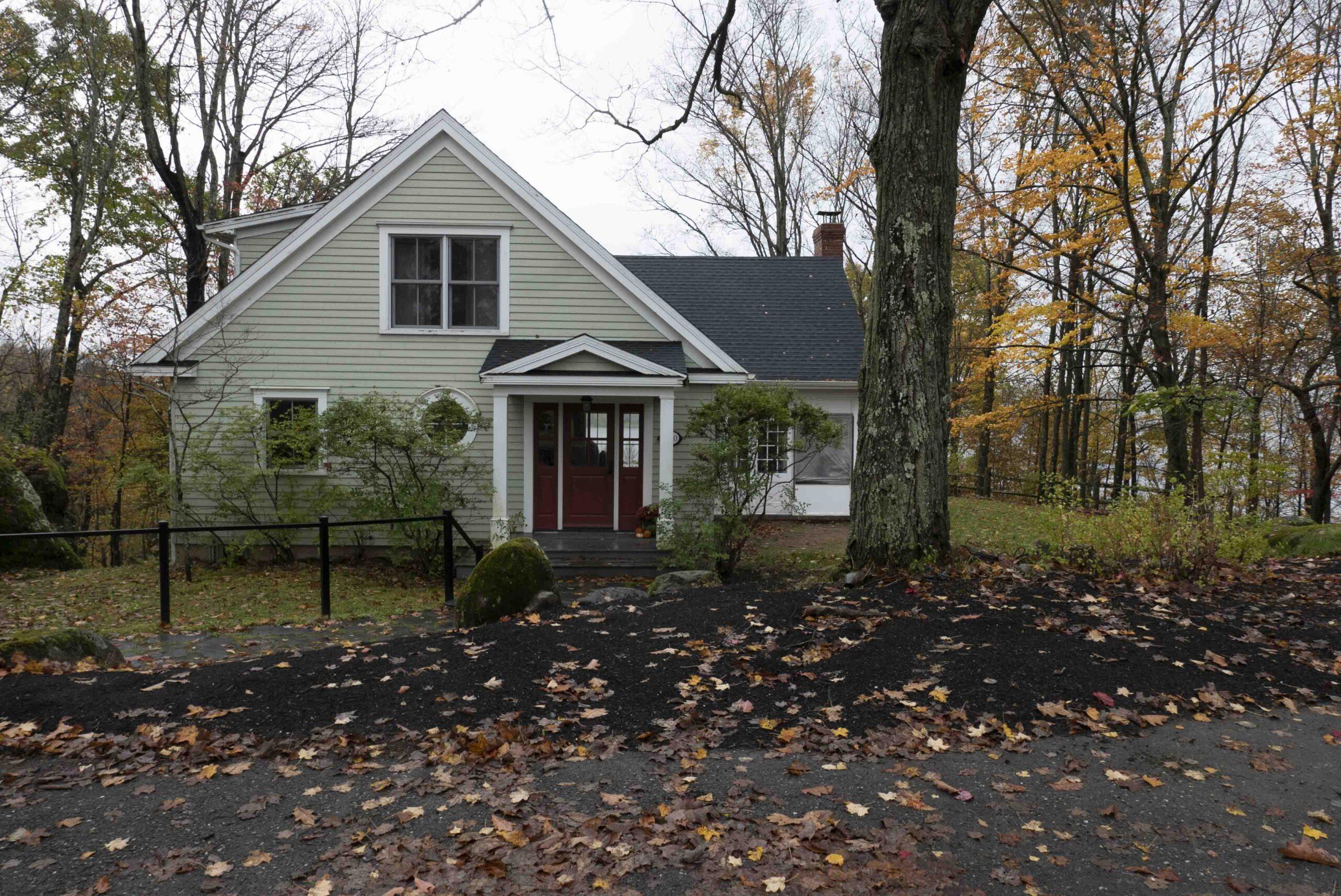Working on Timelines, the 3 km trail at Glen Villa that opened last weekend, started me thinking about trails and paths more generally, and particularly about the way the size, shape and the material a path is made of affect how we respond.
What a difference there is, for instance, between the effect of a winding path made of wood chips …
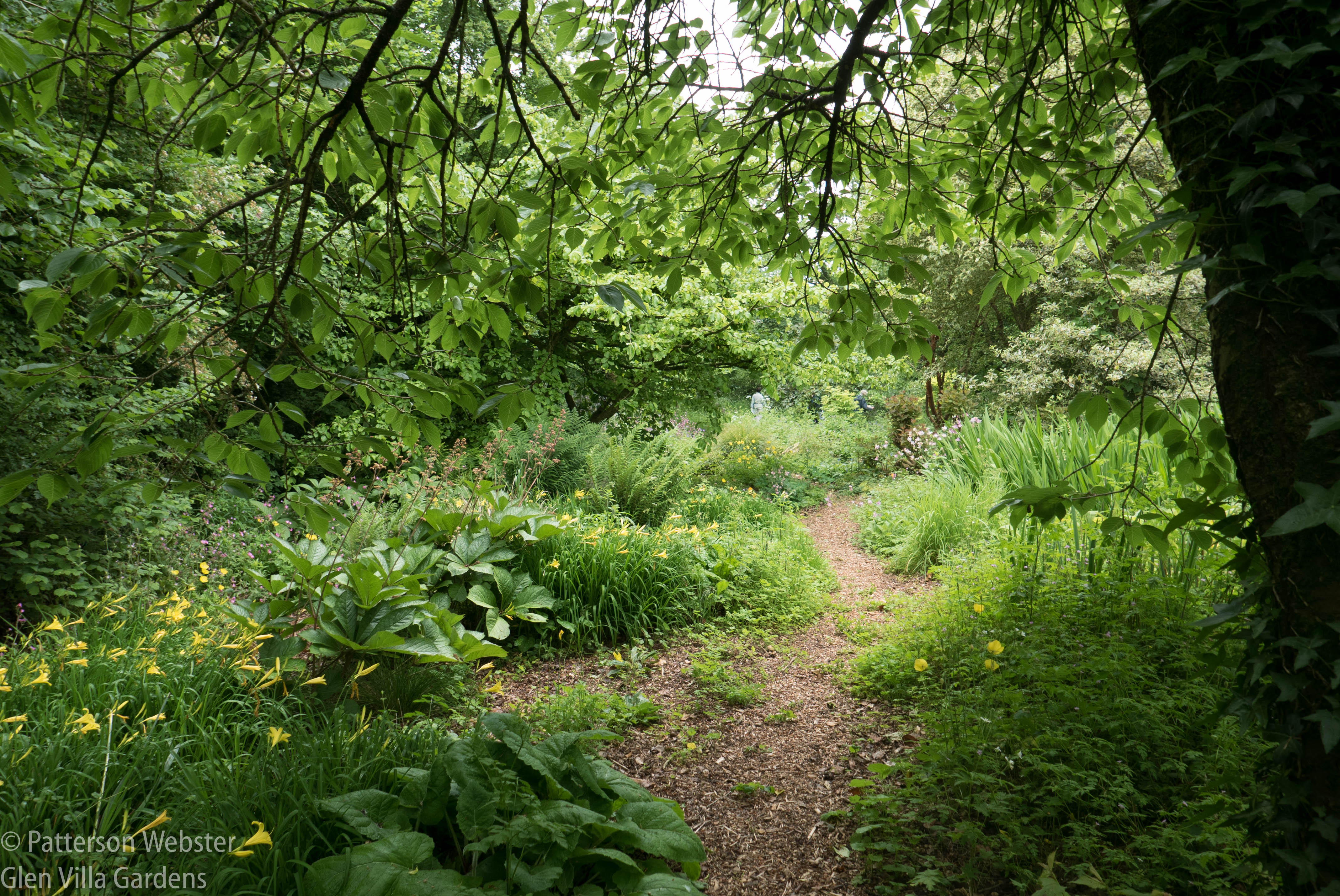
This photo shows a wood chip path at Holbrooke Garden, a naturalistic garden in Devon.
… and a straight path that leads to a symmetrical façade.
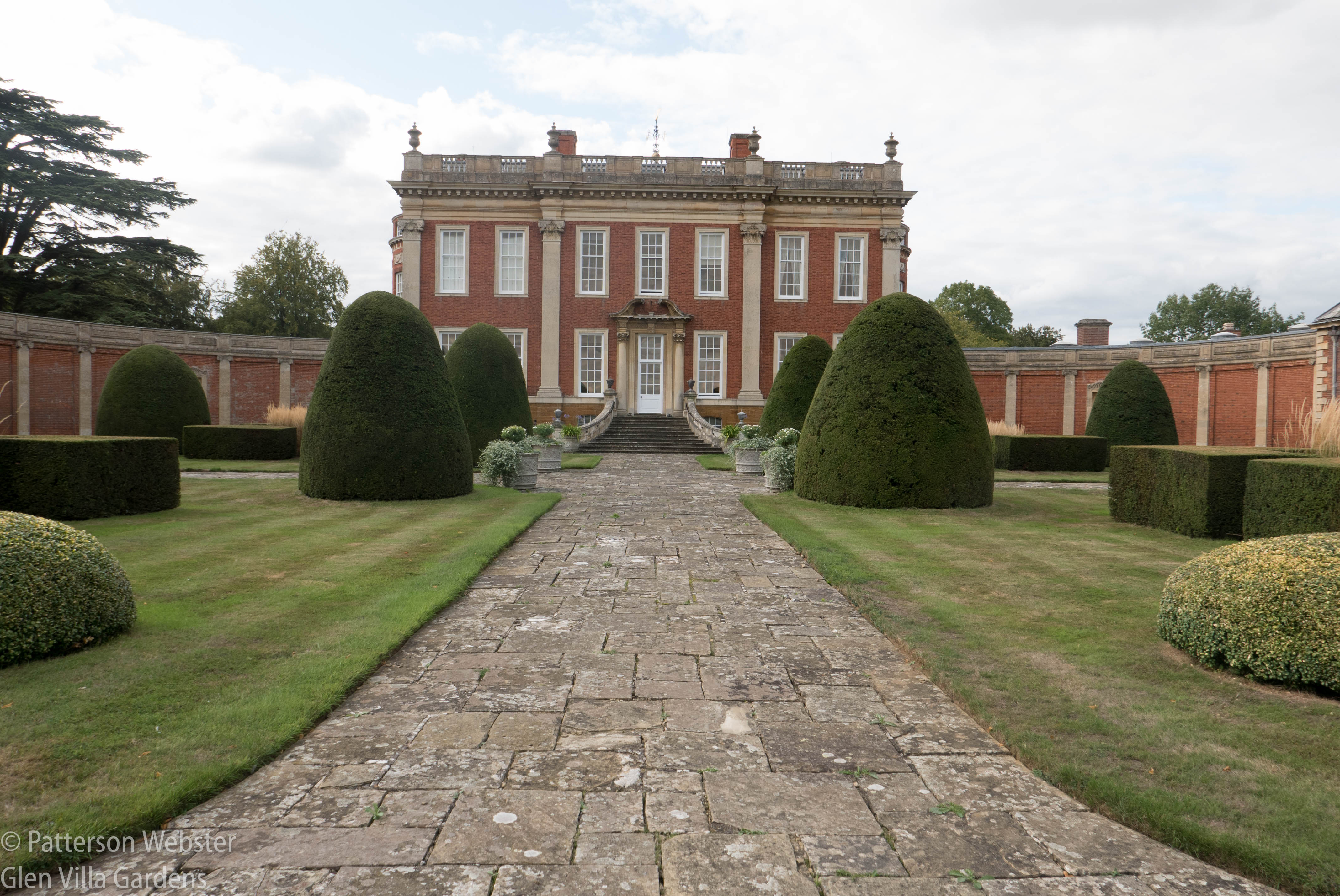
A tightly laid stone path leads to the Queen Anne façade of Cottesbrooke in Northamptonshire.
Scrolling through the thousands of photographs I’ve taken over the years in gardens around the world, I quickly realized that even paths made of the same material — stone, for instance — can create responses that differ considerably. A path made of straight-cut stones tightly laid suggests a higher level of formality than straight-cut stones laid in a more random pattern.
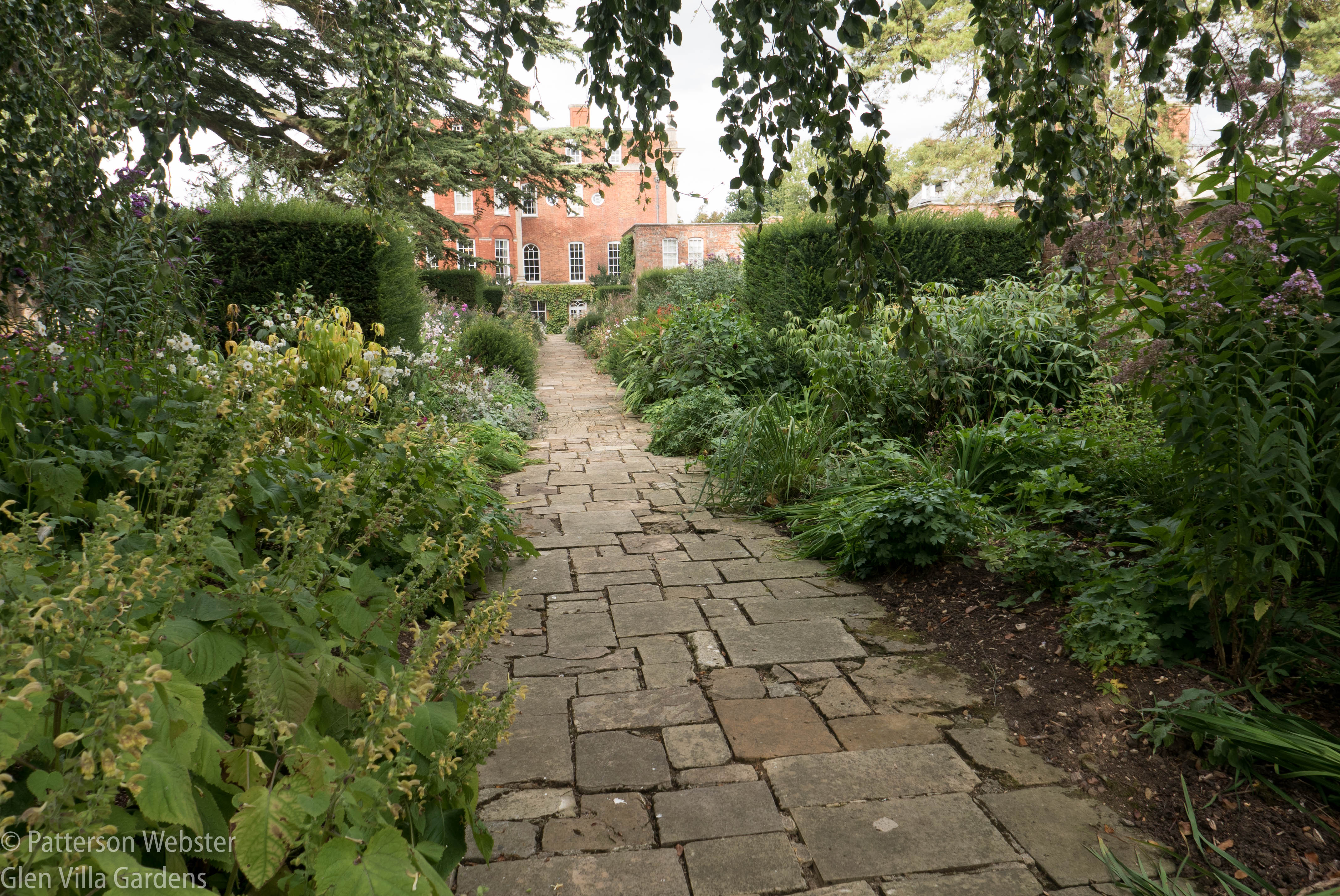
The sense of informality is heightened when the path is bordered by loosely planted flower beds.
When the stones are shaped irregularly and edged with gravel, the effect changes again.
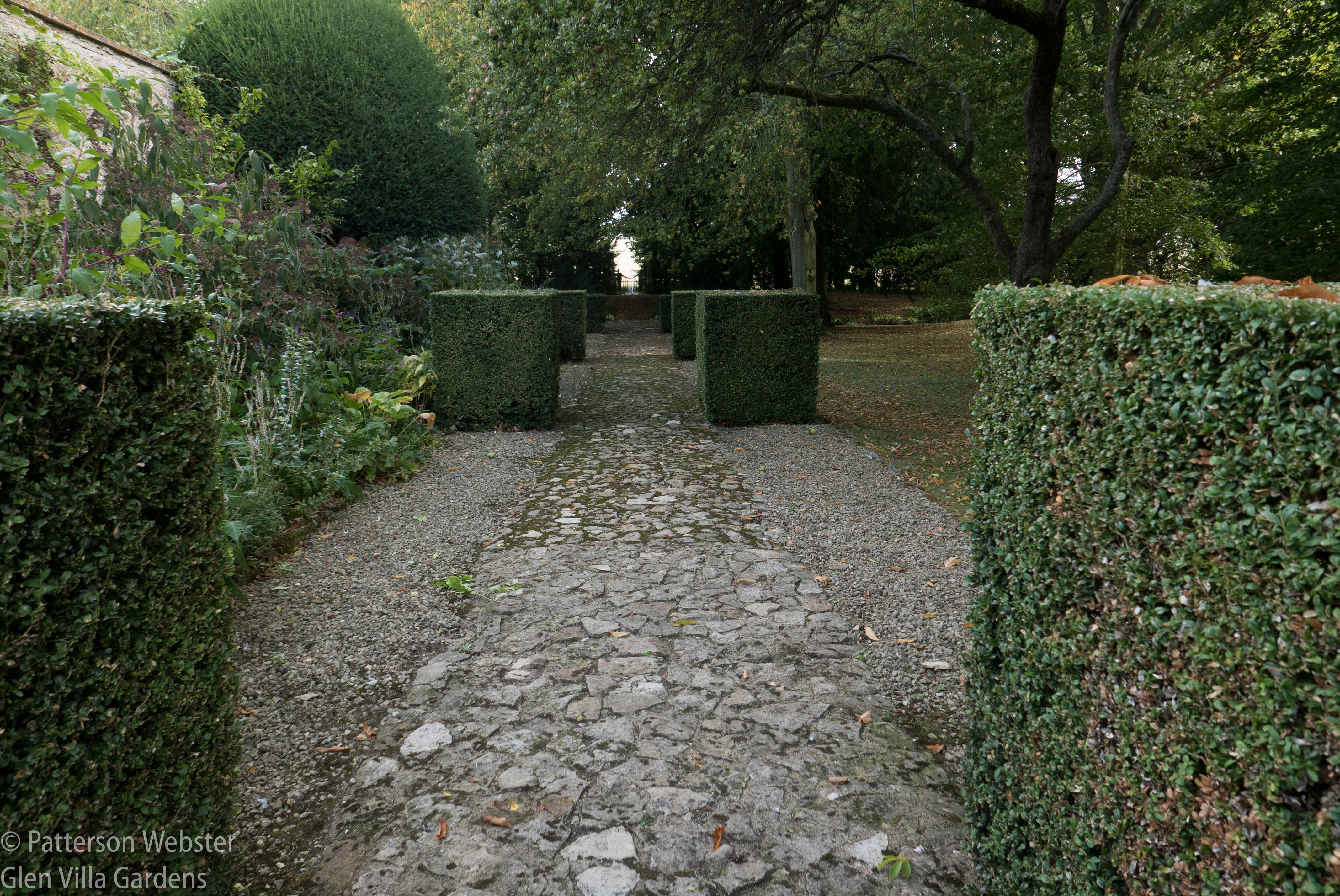
The clipped boxwood hedges at Haseley Court act almost like wings on a stage and the shade adds to the sense of mystery that this path suggests..
Paths are practical elements in a garden, minimizing the wear and tear that happens when people regularly follow the same route. While straight-cut stones that separate grass from a border create formality, they also suggest a practical approach to maintenance.
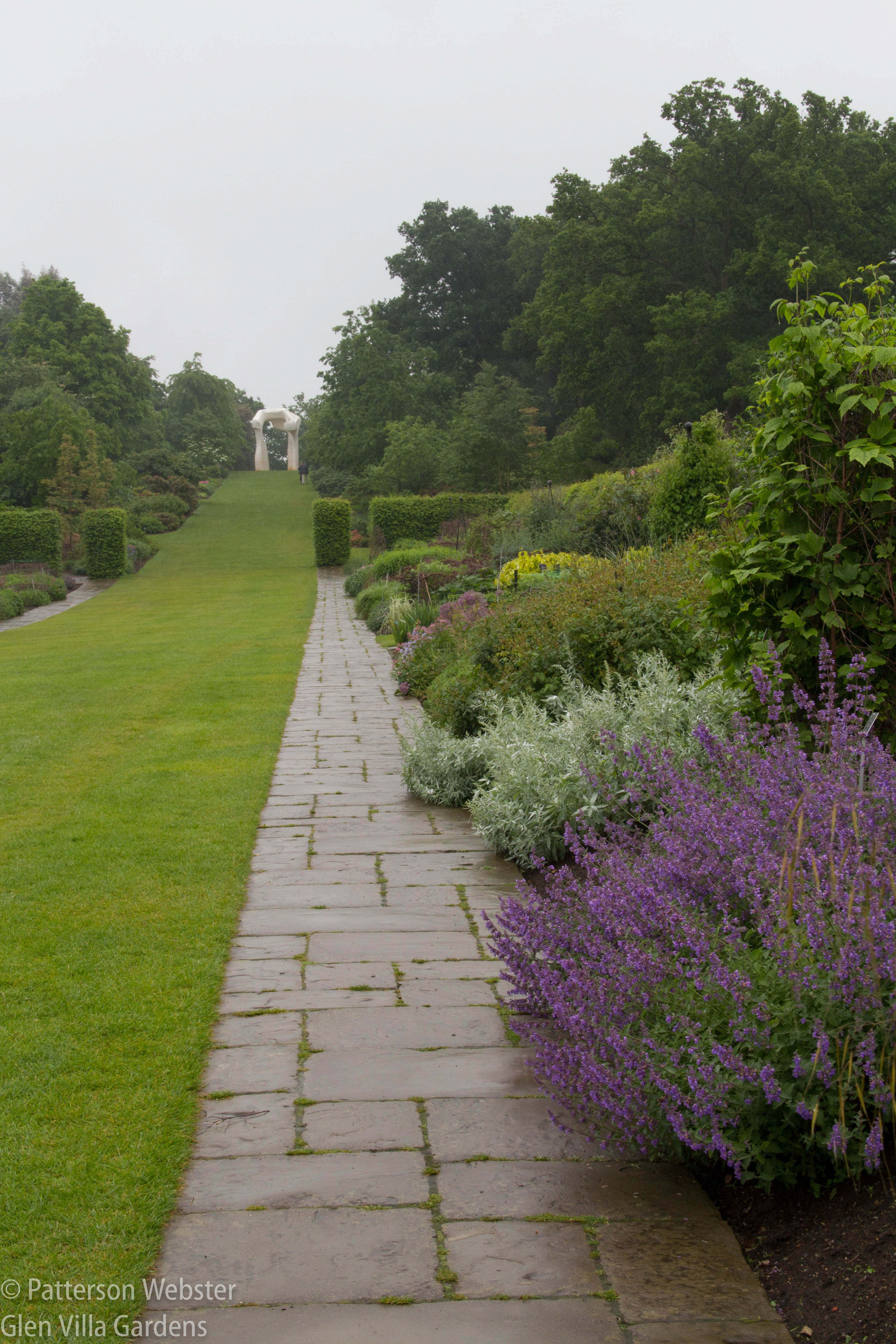
Borders edge grass on this long approach to a sculpture at the Royal Horticultural Society’s garden, Wisley.
Most stone paths are continuous but they don’t have to be. The round stepping stones below that direct your feet through this section of the garden at Rodmarton Manor lighten the formal design.
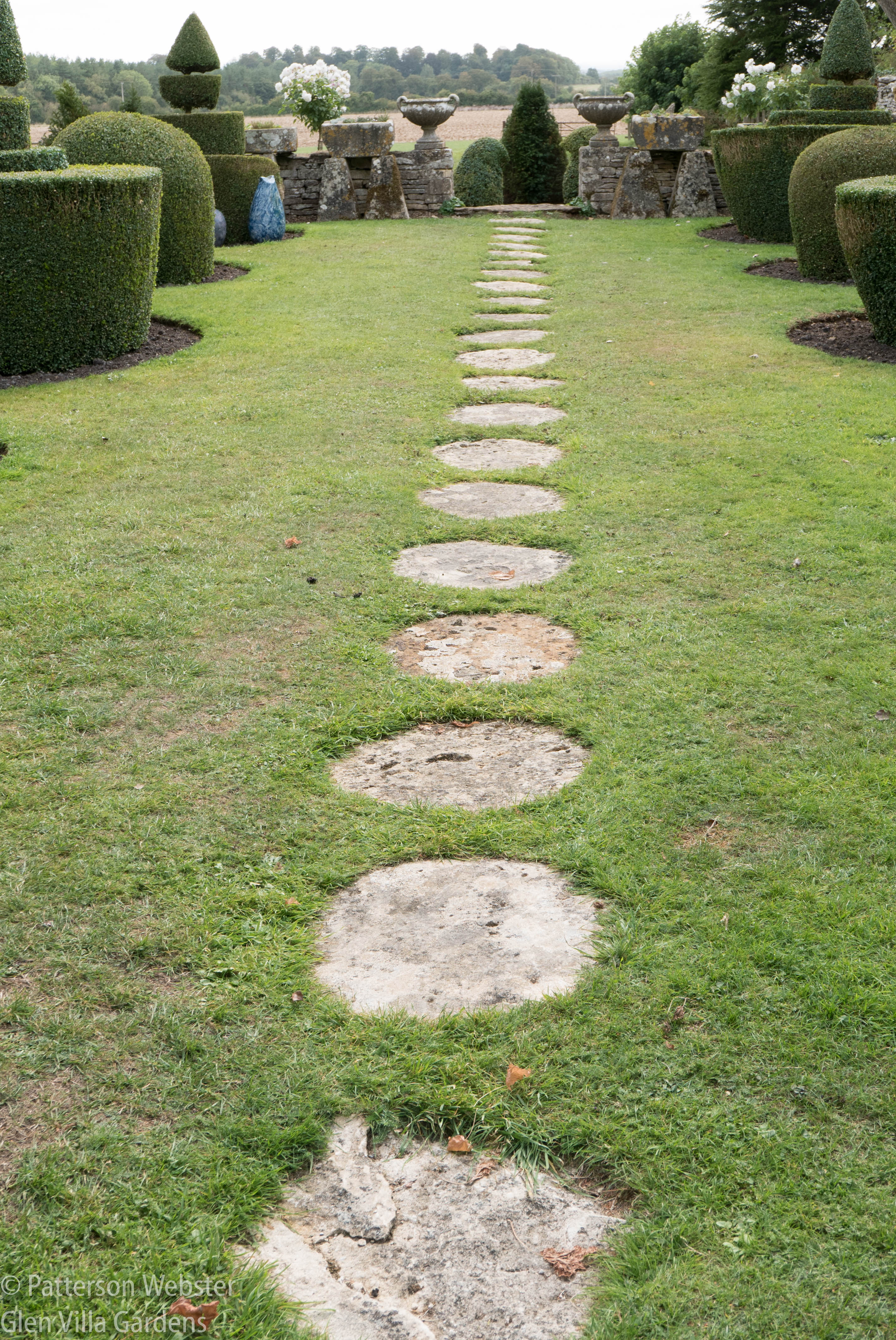
I like the way these round stepping stones combine with the round and square-edged shrubs on either side.
Not all paths work well. One I saw in a garden in France made me nervous. Was it safe to walk on the stones? Would they wobble or would I catch a heel in the gaps between the stones?
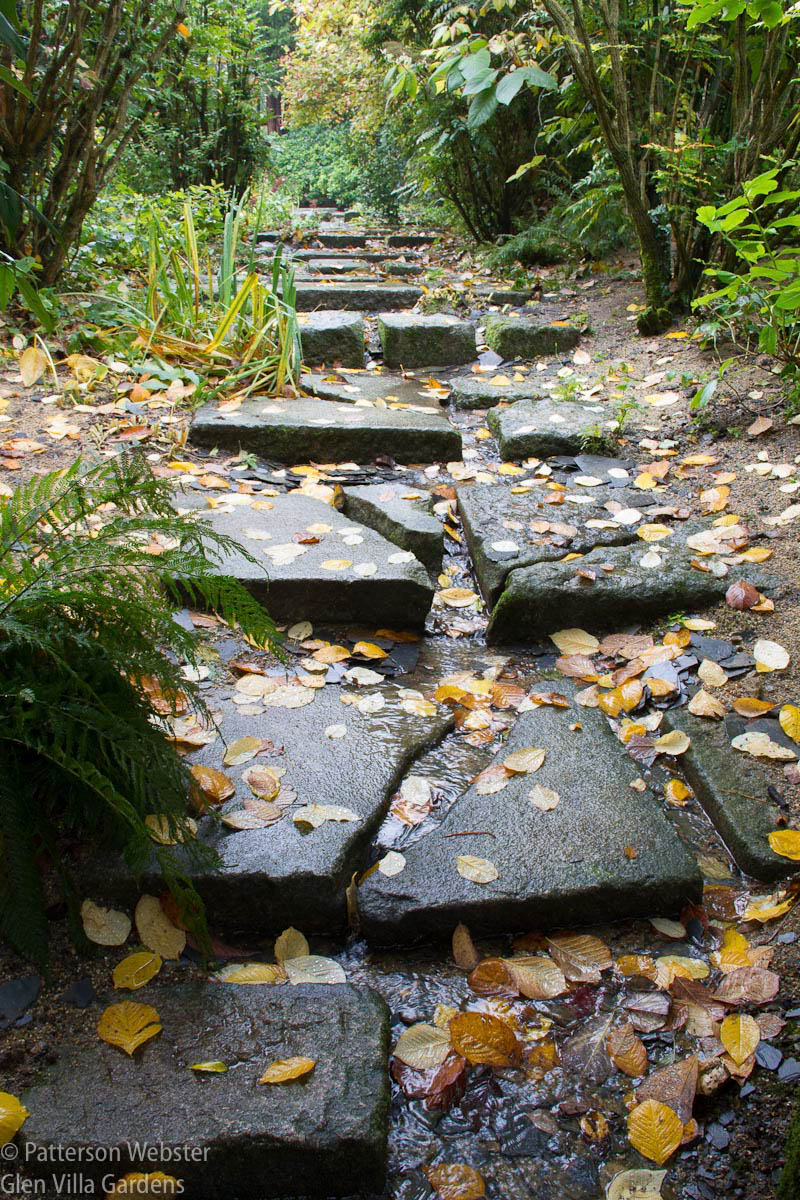
As I recall, a stream trickled down this stone path, making it even more treacherous.
A path at England’s Bury Court is mounded to allow water to run off, making it dry quickly. But more interesting to me is the design of the path. It is a straight line that becomes a curve to echo the curve of a hedge nearby and the transition from one to the other doesn’t curve but turns at right angles. I can’t remember seeing something like this in any other garden. Have you?
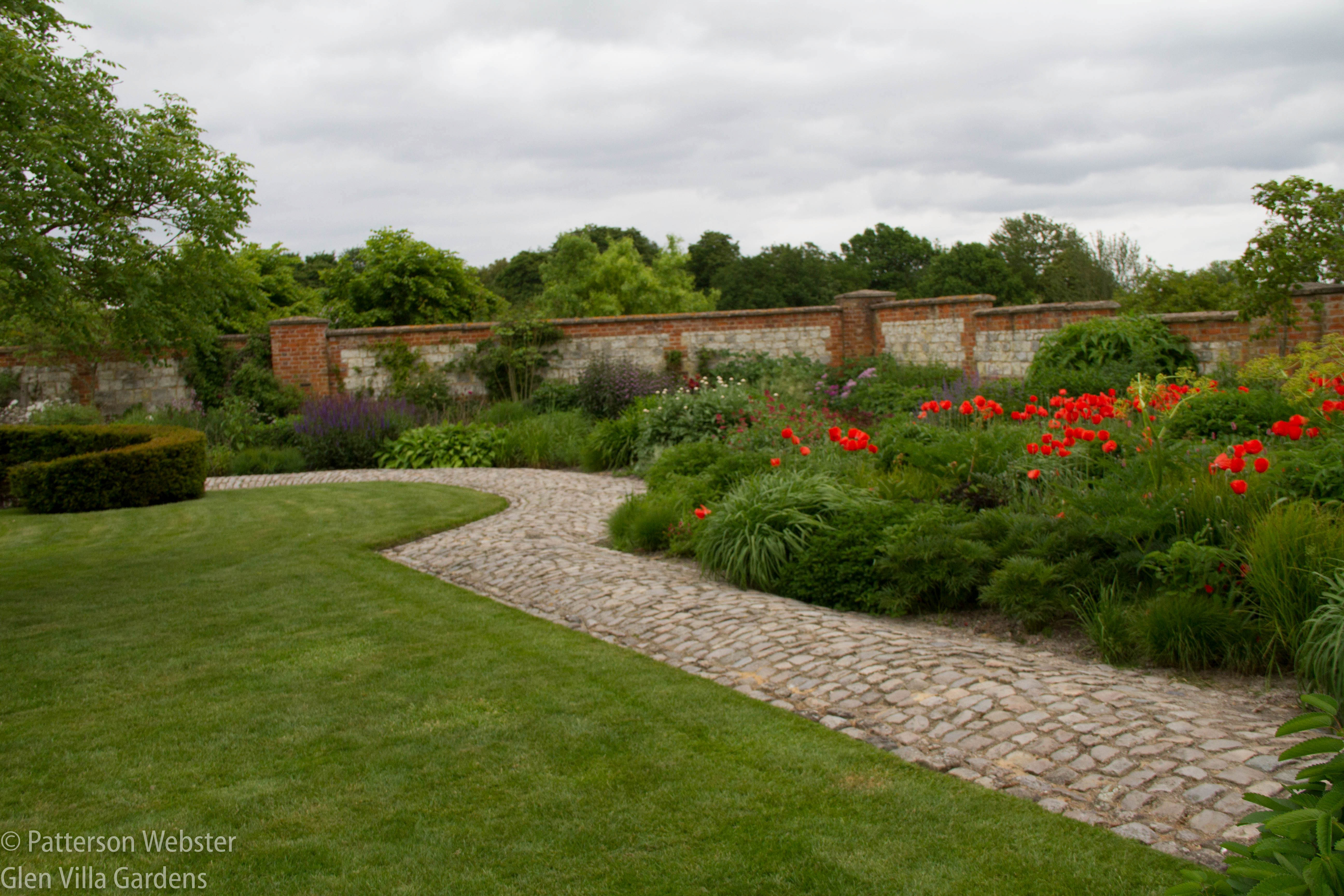
This path at Bury Court is made of local stone and echoes the stone used in the fence.
Stone paths can be expensive but not all are. And expense has little to do with beauty. What could be more gorgeous than this path made of stones set into moss?
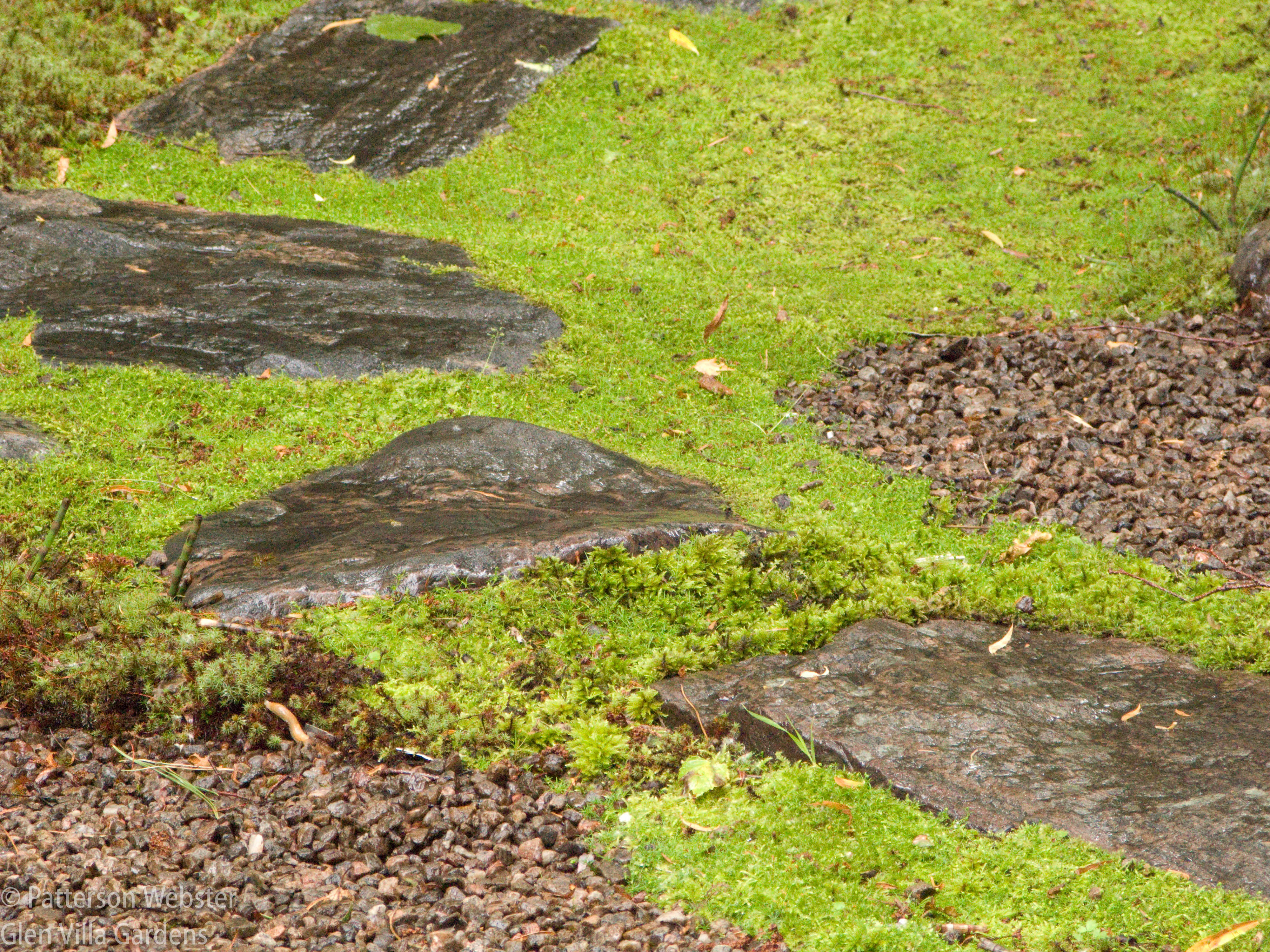
Stones in the Japanese garden at Les Quatre Vents in Malbaie, Quebec.
Do you use paths in your garden? What material are they made of, and how did you determine the design?





